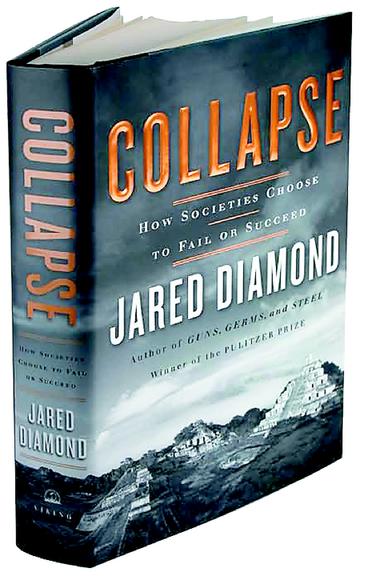With a preemptive apology to those who view indigenous cultures as too spiritually enlightened to destroy their habitats, Diamond examines why 11 cultures collapsed, survived or still hover on the brink. This could have been a boring book. It isn’t. Diamond weaves together geography, biology, anthropology and human nature in one vast epic that, like a disaster novel, pulls the reader headlong through spectacular upheavals in space and time.
For an “important” book, Collapse is an easy read. Diamond’s earlier Pulitzer Prize winner, Guns, Germs and Steel, bogged down in repetition and convoluted structure. Whether because of better writing, different editing or the narrative drive of the subject, Collapse avoids the previous problems. If Diamond were a novelist, he’d be James Michener without the mawkish bits.
Diamond begins with a gritty, lyrical tour of his beautiful, beloved Montana, its threatened environment and economy. He then turns to the collapse of four past societies: Easter Island, Pitcairn and Henderson Islands, the Anasazi at Chaco Canyon and classical Mayan civilization. In all these instances, Diamond traces five factors he sees as determining whether a society survives or fails: a fragile or damaged environment, climate change, loss of friendly contacts, rise of hostile contacts, and the slipperiest and most fascinating—the decisions societies make in order to survive.
Some societies died from overpopulation. Some frittered away critical resources. Others competed themselves to death constructing ever more grandiose monuments to their rulers.
Then Diamond surveys the medieval Norse settlements in Greenland at length. The immigrant Scandinavian culture failed after 400 years, while the Inuit survived by responding differently to the same harsh surroundings. The Norse literally preferred to die as European Christian farmers than to survive as Inuit hunters. On a more cheerful note, Diamond discusses locations seemingly headed for collapse that survived instead.
Turning to present-day societies, Diamond sees Rwanda in part as a Malthusian tragedy. Haiti is hopeless, while the Dominican Republic next door might squeak through. China will come to dominate almost everything. And Australia’s public image contradicts its environmental realities. The book’s final section analyzes why societies make disastrous decisions. Then the focus narrows with “Big Business and the Environment.” Diamond advises readers not to waste time blaming corporations for placing profits above all else. That’s what corporations are supposed to do. Instead, he explores how to push businesses toward profitable sustainability.
In fact, the book doesn’t really fit standard patterns of environmental advocacy. Diamond is more like an engineer who visits a site, looks around with an expert eye, and says, “Here’s where you’re going to have serious problems in a few years.” He sees the driving forces of history less as the Alexanders and Hitlers and more as charcoal production and salt leaching.
The final chapter lists Diamond’s candidates for the 12 most pressing threats to our survival. He suggests rebuttals to complacent one-liners demanding business as usual, and he ends, remarkably, with reasons for hope.
If I were the Secretary of Education, I’d stop wasting time denouncing supposedly gay cartoon characters and start requiring every high school student to read Collapse.









